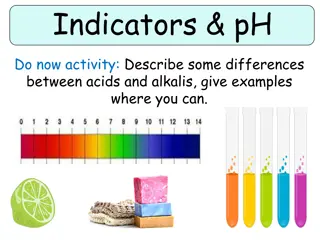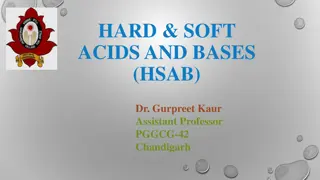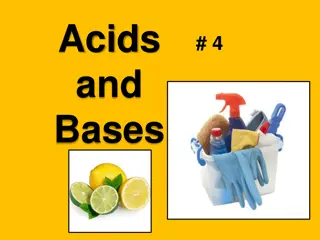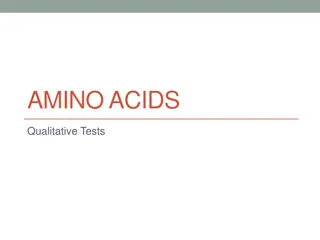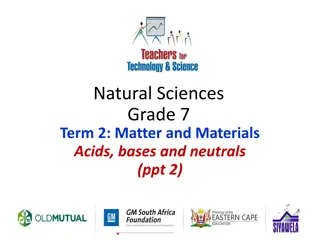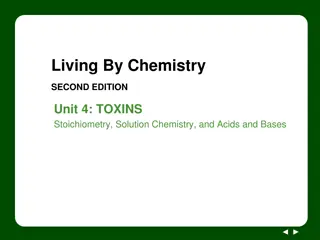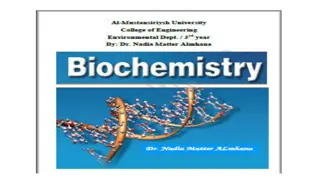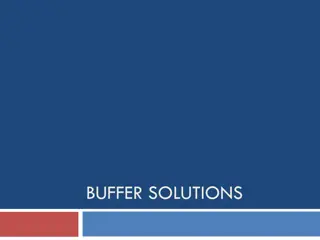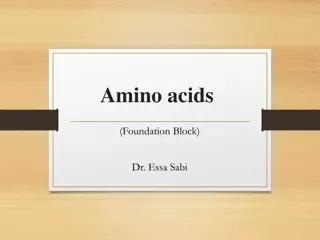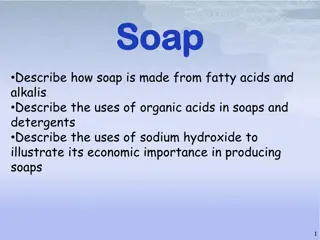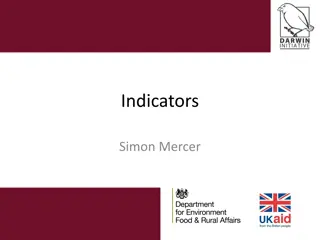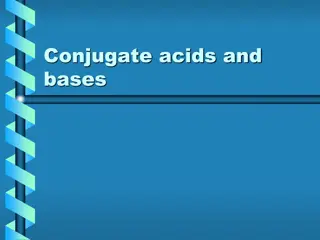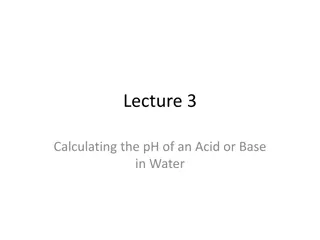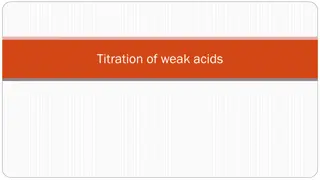Understanding Acids, Alkalis, Indicators, and the pH Scale
Solutions can be acidic, alkaline, or neutral depending on whether an acid or alkali is dissolved in water. Indicators like litmus and universal indicator help determine acidity or alkalinity. The pH scale measures this, with 7 being neutral. Neutralization reactions occur when an acid and a base react to form a neutral solution. Different neutralization reactions involve acids reacting with metal oxides, metal hydroxides, or metal carbonates.
Download Presentation

Please find below an Image/Link to download the presentation.
The content on the website is provided AS IS for your information and personal use only. It may not be sold, licensed, or shared on other websites without obtaining consent from the author. Download presentation by click this link. If you encounter any issues during the download, it is possible that the publisher has removed the file from their server.
E N D
Presentation Transcript
Week 6 Acids and Alkalis Indicators and the pH scale Solutions can be acidic, alkaline or neutral: we get an acidic solution when an acid is dissolved in water we get an alkaline solution when an alkali is dissolved in water solutions that are neither acidic nor alkaline are neutral An indicator is a substance that changes colour when it is added to acidic or alkaline solutions. Litmus and universal indicator are two indicators that are commonly used in the laboratory. Litmus paper Comes as red litmus paper and blue litmus paper. The table shows the colour changes it can make. Universal indicator and the pH scale Universal indicator is supplied as a solution or as universal indicator paper. Unlike litmus, universal indicator can show us how strongly acidic or alkaline a solution is, not just that the solution is acidic or alkaline. This is measured using the pH scale, which runs from pH 0 to pH 14. Universal indicator has many different colour changes shown below. Neutralisation A chemical reaction happens if you mix together an acid and a base. The reaction is called neutralisation. A neutral solution is made if you add just the right amount of acid and base together. Acids contain H+ ions and alkalis contains OH- ions. These can chemically bond to produce water which is neutral! 1
Test yourself Task: Answer the questions below. 1. The pH scale shown below is used to measure how acidic or alkaline a solution is. acidic neutral alkaline 1 2 3 4 5 6 7 8 9 10 11 12 13 14 pH scale The graph below shows how the pH of the liquid in Barry's mouth changed as he ate a meal. 8 Barry started to eat pH of the liquid in Barry's mouth 7 6 5 4 time a) Use the graph to give the pH of the liquid in Barry's mouth before he started to eat. pH .................. b) What does this pH tell you about the liquid in Barry's mouth before he started to eat? Use the pH scale above to help you. Tick the correct box. It was acidic. It was alkaline. It was colourless. It was neutral. c) Look at the graph above. What happened to the pH of the liquid in Barry's mouth as he ate the meal? ..................................................................................................................... d) Barry chews special chewing gum after each meal. The chewing gum neutralises the liquid in his mouth. What type of substance neutralises an acid? Tick the correct box. 2
Neutralisation reactions There are three main neutralisation reactions which you need to know. 1. Acid reacting with a metal oxide 2. Acid reacting with a metal hydroxide 3. Acid reacting with a metal carbonate Metal oxides Metal oxides act as bases. Here is the general word equation for what happens in their neutralisation reactions with acids: metal oxide + acid a salt + water The salt made depends on the metal oxide and the acid used. E.g. copper oxide + hydrochloricacid copper chloride + water CuO + 2HCl CuCl2 + H2O Metal hydroxides Metal hydroxides act as bases. Some of them dissolve in water, so they form alkaline solutions. Here is the general word equation for what happens in their neutralisation reactions with acids: metal hydroxide + acid a salt + water As with metal oxides, the salt made depends on the metal hydroxide and the acid used. E.g. sodium hydroxide + sulphuric acid sodium sulphate + water 2NaOH + H2SO4 Na2SO4 + 2H2O Notice that a salt plus water are always produced when metal oxides or metal hydroxides react with acids. 3
Metal carbonates Most carbonates are usually don t dissolve in water (insoluble). They also neutralise acids, making a salt and water, but this time we get carbon dioxide gas too. Here is the general word equation for what happens: metal carbonate + acid a salt + water + carbon dioxide The reaction fizzes as bubbles of carbon dioxide are given off. This is easy to remember because we see the word 'carbonate' in the chemical names. E.g. copper carbonate + nitric acid copper nitrate + water + carbon dioxide CuCO3 + 2HNO3 Cu(NO3)2 + H2O + CO2 Remember you can test for carbon dioxide using lime water. Test yourself Task 1: Fill in the table with the salt produced when each of the bases and acids react. Calcium chloride 4
Task 2: Match the following: ACID + ALKALI Hydrochloric acid + sodium hydroxide Nitric acid + sodium hydroxide Sulphuric acid + sodium hydroxide SALT (+ WATER) Sodium nitrate + water Sodium sulphate + water Sodium chloride + water Task 3: Write the word equations for the following reactions. 1. Calcium carbonate and hydrochloric acid 2. Sodium hydroxide and hydrochloric acid 3. Copper oxide and sulphuric acid 4. Iron oxide and nitric acid 5. Potassium carbonate and sulphuric acid 6. Magnesium hydroxide and nitric acid 5



